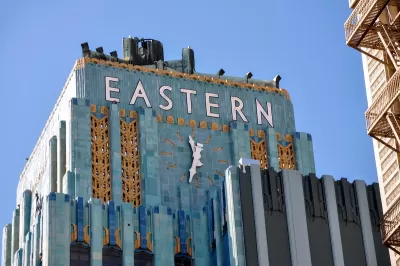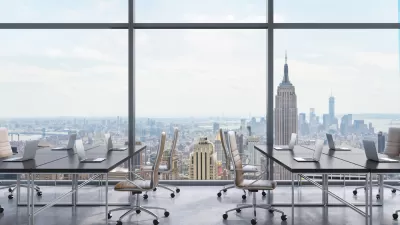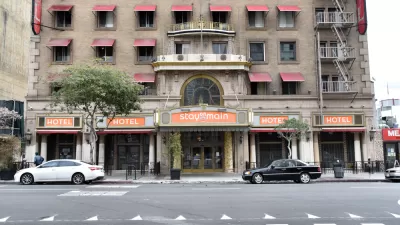Cities with ordinances aimed at making commercial-to-residential conversions easier are reaping the benefits.

The rise of commercial-to-residential conversions in Los Angeles reveals how easing permitting for adaptive reuse can yield positive results, writes Molly Bolan in Route Fifty. “Last year, the city accounted for 12% of the country’s adaptive reuse projects, creating more than 1,200 units, according to a recent report from Yardi Matrix, a commercial real estate research firm.”
Adaptive reuse isn’t new for the City of Angels, Bolan points out. “Los Angeles adopted its first adaptive reuse ordinance in 1999, making it easier for developers to convert underutilized commercial spaces into housing. The policy helped bring 12,000 residential units to the heart of the city.” In 2003, the city expanded the ordinance to include more neighborhoods outside of downtown, but large parts of the city still fall outside its purview, and only buildings built before 1975 are eligible.
Now, “City officials are looking to change that. A proposed update would expand the ordinance to cover the entire city, as well as reduce minimum unit size requirements and eliminate minimum parking requirements for projects within a half-mile of a major public transit stop.” The proposed update would apply to any building over 15 years old.
Bolan adds another example from a much smaller community: Kissimmee, Florida was home to 6 percent of the nation’s conversions last year, with hotels and motels accounting for a large part of this number. Because of the area’s tourist-commercial zoning rules, “developers don’t have to navigate a rezoning process and aren’t subject to public hearings.”
FULL STORY: How cutting red tape can encourage housing conversions

Alabama: Trump Terminates Settlements for Black Communities Harmed By Raw Sewage
Trump deemed the landmark civil rights agreement “illegal DEI and environmental justice policy.”

Planetizen Federal Action Tracker
A weekly monitor of how Trump’s orders and actions are impacting planners and planning in America.

The 120 Year Old Tiny Home Villages That Sheltered San Francisco’s Earthquake Refugees
More than a century ago, San Francisco mobilized to house thousands of residents displaced by the 1906 earthquake. Could their strategy offer a model for the present?

Opinion: California’s SB 79 Would Improve Housing Affordability and Transit Access
A proposed bill would legalize transit-oriented development statewide.

Record Temperatures Prompt Push for Environmental Justice Bills
Nevada legislators are proposing laws that would mandate heat mitigation measures to protect residents from the impacts of extreme heat.

Downtown Pittsburgh Set to Gain 1,300 New Housing Units
Pittsburgh’s office buildings, many of which date back to the early 20th century, are prime candidates for conversion to housing.
Urban Design for Planners 1: Software Tools
This six-course series explores essential urban design concepts using open source software and equips planners with the tools they need to participate fully in the urban design process.
Planning for Universal Design
Learn the tools for implementing Universal Design in planning regulations.
Clanton & Associates, Inc.
Jessamine County Fiscal Court
Institute for Housing and Urban Development Studies (IHS)
City of Grandview
Harvard GSD Executive Education
Toledo-Lucas County Plan Commissions
Salt Lake City
NYU Wagner Graduate School of Public Service





























